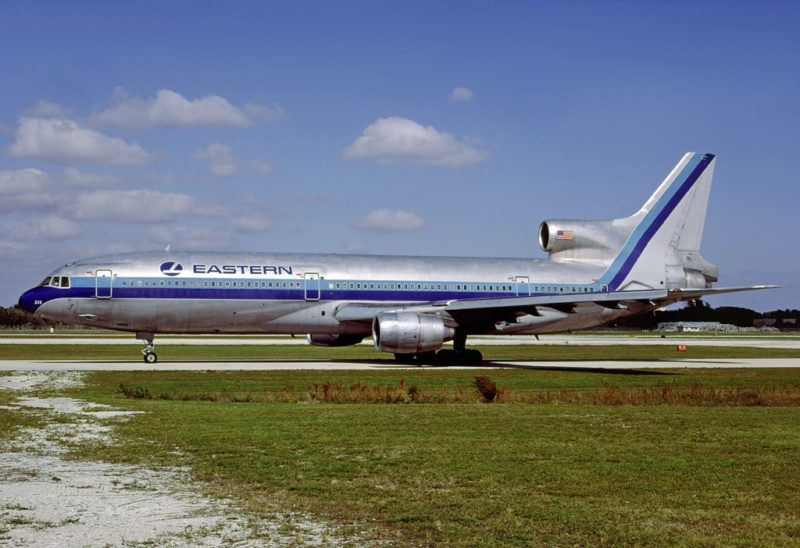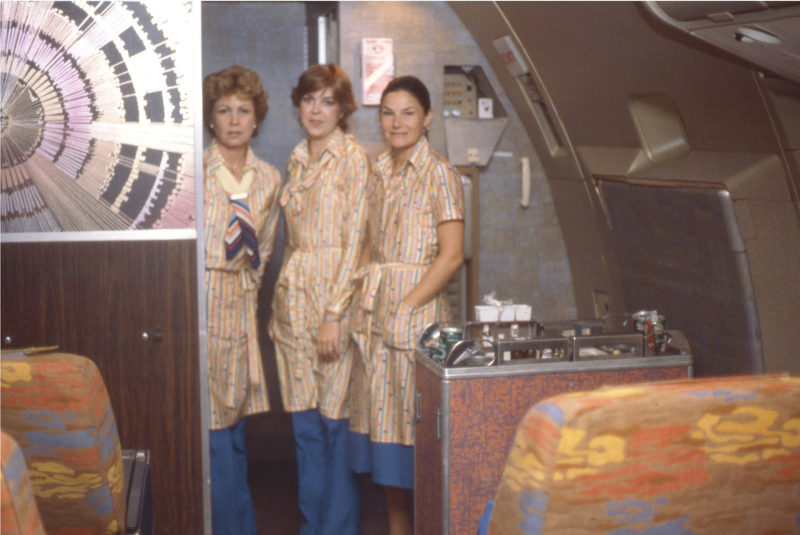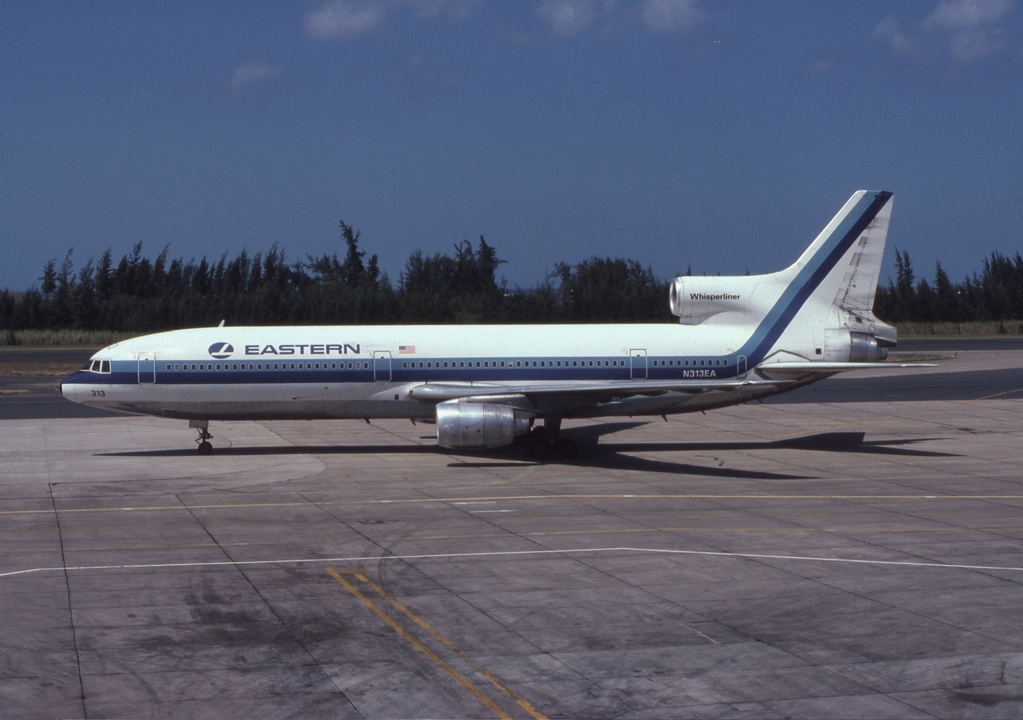On Thursday, May 5, 1983, a Lockheed L-1011 Tristar series 1 registered N334EA, a widebody jet powered by three Rolls-Royce RB.211 turbofans, was rostered for a morning rotation from Miami to Nassau in the beautiful Bahamas with 172 passengers onboard, flight number EA855. The 40-minute, 180-mile (290 kilometers) hop is usually the preserve of smaller jets, but a quick short haul out-and-back between longer legs can be a good way to squeeze a bit of extra value out of an asset.
N334EA weighed 327,367 lbs (148 tonnes) including 46,000 lbs (20.8 tonnes) of fuel at take-off, under the command of Richard Boddy, who was brand new to the Tristar. He had 12,045 hours in his logbook but just thirteen hours on type, hence the presence of Steve Thompson, a supervisory check captain in the co-pilot’s seat, who had 16,946 hours including 282 on the type. The flight engineer was Dudley Barnes, with 9,027 hours including 2,666 hours on type. Shirley Alexiou, who had fourteen years of experience as a flight attendant and qualified on the DC-9, B727, A300, and L-1011, was in charge of the cabin.
Airborne out of Miami at 08:56, the flight was already descending through 15,000 feet into a rainy Nassau at 09:15 when engine oil pressure for number two in the tail started dropping from 30 psi to between 15 and 25 psi. Boddy elected to shut the engine down and return to Miami, where Eastern Airlines had its maintenance base and the weather was better. They were given a clearance to climb back up to 20,000 feet and reversed course back towards Florida.
Low Oil Pressure Warning
En route, low oil pressure warning lights for engines one (left wing) and three (right wing) illuminated, and needles in the pressure gauges dropped to zero, which seemed impossible, as each engine’s oil supply is a completely closed system. The flight engineer radioed the airline’s tech ops centre in Miami to help determine if there was a common electrical source or other shared infrastructure that could generate a contagious cascading failure. Miami suggested checking the number two AC bus but the relevant circuit breakers showed no discrepancies.
Unknown to the crew or the maintenance team on the ground, there was indeed a common thread – in an overnight service, O-ring seals had been removed from all three engines, and not replaced.
With no oil supply, the number three engine overheated and failed at 09:28, leaving the aircraft flying on just engine number one. Best vertical speed on a single engine was a drift down of minus 500 feet per minute.
Whisperliner
A couple of minutes later, and still out of sight of land, engine number one seized up and the giant jet turned into a glider, finally fulfilling the Eastern Airlines marketing name given to the Tristar and becoming a true Whisperliner. Vertical speed sagged to -1,600 feet per minute with an airspeed of 225 knots for best glide.
The Auxiliary Power Unit (known as the APU, a small generator in the rear fuselage usually only used on the ground to generate electrical power and climate control) was fired up to provide hydraulic pressure and electrical power, giving the crew the ability to operate all the flight controls and instruments. Miami ARTCC alerted the Coast Guard about the imminent ditching of a passenger jet and a Dassault Falcon jet and helicopter immediately launched from Opa Locka at 09:28. A helicopter and a C-130 Hercules already airborne out of USCG Clearwater were diverted to assist. Three more helicopters and another Falcon were alerted and prepared to scramble. The first Coast Guard Falcon was able to briefly intercept Eastern 855 but soon lost sight of it again in the low scudding cloud. In the cabin, the flight attendants swung into action, rebriefing the passengers on life jackets and exits, preparing life rafts, selecting Able Bodied Persons (ABPs) to sit near exits to assist with the evacuation, and preparing the cabin for what would undoubtedly be a violent ditching due to the rough seas.
Engines one and three had seized but because number two had been pre-emptively shutdown, the pilots were able to restart it on their third attempt at 09:38 as they sank through 4,000 feet, still 22 miles (35 kilometres) from land. The descent towards the dark frothing sea was arrested at 3,000 feet and a gradual climb on just the one engine was achieved, topping out at 3,900 feet as they went feet dry over Miami Beach at 09:43. The passengers were kept in the brace position until touchdown at 09:46, 50 minutes after leaving from the same airport.
The control tower observed smoke in engines one and three, so the corresponding engine fire extinguishers were discharged, and the smoke was reported as stopped. Engine number two could not generate enough power to taxi to the gate so Eastern 855, unable to move another inch under its own power, shut down on the taxiway and was towed to the gate for disembarkation. Thus ended one of the closest shaves in aviation history, with the ditching of a widebody jet into the Atlantic barely avoided. All three engines were toast, cooked beyond repair by the lack of lubrication.

NTSB questionnaire
After the incident, the NTSB prepared a questionnaire and sent it to 139 passengers. 92 completed and returned it. The data extracted was revealing about how much attention passengers paid to safety.
81 said they recalled the preflight safety briefing given by cabin crew including the original life jacket demonstration; however only 46 said they had read the safety card. 77 knew the life jackets were under the seats. Only 37 recalled that the life jacket demonstration was repeated during the emergency. 25 had difficulty locating the life jacket and 29 had difficulty removing it from the storage compartment under the seat. 17 had problems removing it from the sealed plastic package. 63 indicated they had some difficulty donning their life jackets. 57 were able to put on their life jackets while seated with their lap straps fastened while 33 were not able to and had to unstrap and/or stand up. Eight inflated their life jackets inside the aircraft, against the advice of the briefing and safety cards; one remarked that he did so deliberately because he did not want to wait until he was in the water before finding that the life jacket would not inflate. 38 said they were instructed by a flight attendant to use a specific exit. 69 said they received some kind of assistance from a flight attendant or another passenger.
The small number of passengers in first class in the forward cabin benefited from being able to sit near a flight attendant and remain in eye contact, and perhaps unsurprisingly stated that instructions from flight attendants were clear and professional. Passengers in the small rearmost cabin seemed to benefit from the same exclusivity as those in first class, and were very impressed by the cabin crew who were “very precise” and “well-informed about emergency procedures”. A male flight attendant in the rear cabin stood on a seat and demonstrated how to don a life jacket correctly.

In the second and third cabins, most passengers thought the flight attendants spent too much time briefing the so-called Able Bodied Persons (ABPs) that had been selected to assist with crowd control, doors and slides. Many did not recall seeing flight attendants at all, although they said they could hear announcements on the PA. Comment was also made on a lack of information given about exit door operation, the use of life rafts, and contradictory instructions on the correct brace position (one ABP said the flight attendant needed a manual, which she could not find, to explain the use of the life raft). Many passengers said they felt neglected and uninformed, but it seemed that those who had personal contact with flight attendants praised their professional manner.
A lot of the confusion can be put down to “the fog of war” – unfamiliarilty and panic clouding the judgement and clarity of the passengers’ thoughts. With the weather fairly poor, the seas would have been an unforgiving site for a water landing and it is probable that if one of the engines had not been able to be restarted, there would have been lives lost in the ensuing ditching. A factor that has to be considered is the relative naivete of airline passengers in the 1980s, who would have mostly been far less frequent travellers than today’s. One of the many outstanding takeaways from the 2009 ditching of USAirways 1549 in the Hudson River in New York under the command of now-famous Captain Sully was not only was there no panic, the passengers were very much part of the solution – during their descent towards the river, one in the back actually shouted out, “Exit row people get ready!” How’s that for grace under pressure?
Studying events like these make flying safer, and luckily Eastern 855 was part of that evolutionary process without also being a grim statistic. Phew!
Cover Image: Wikimedia Commons/Jon Proctor




